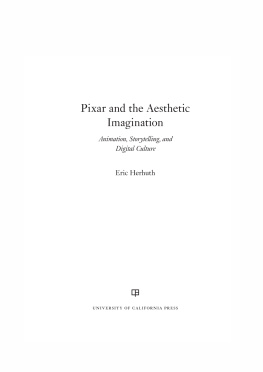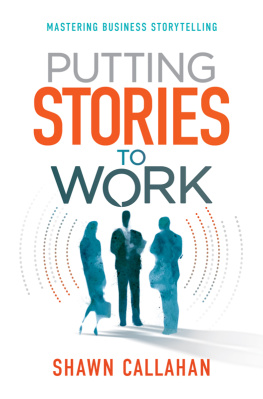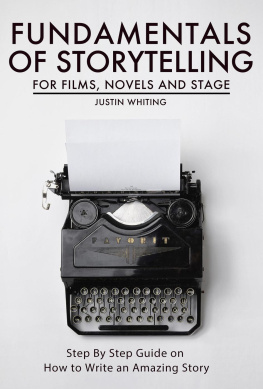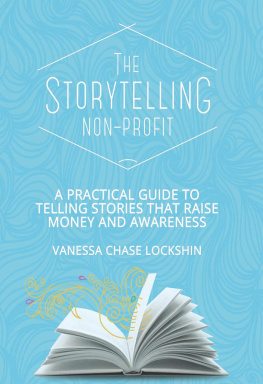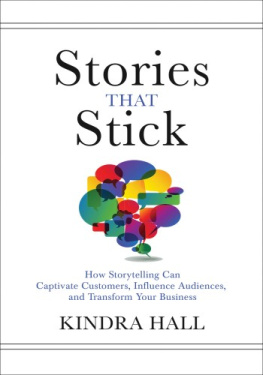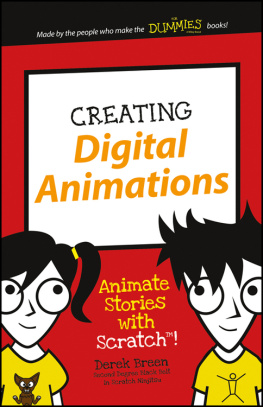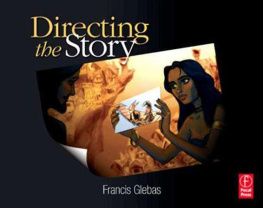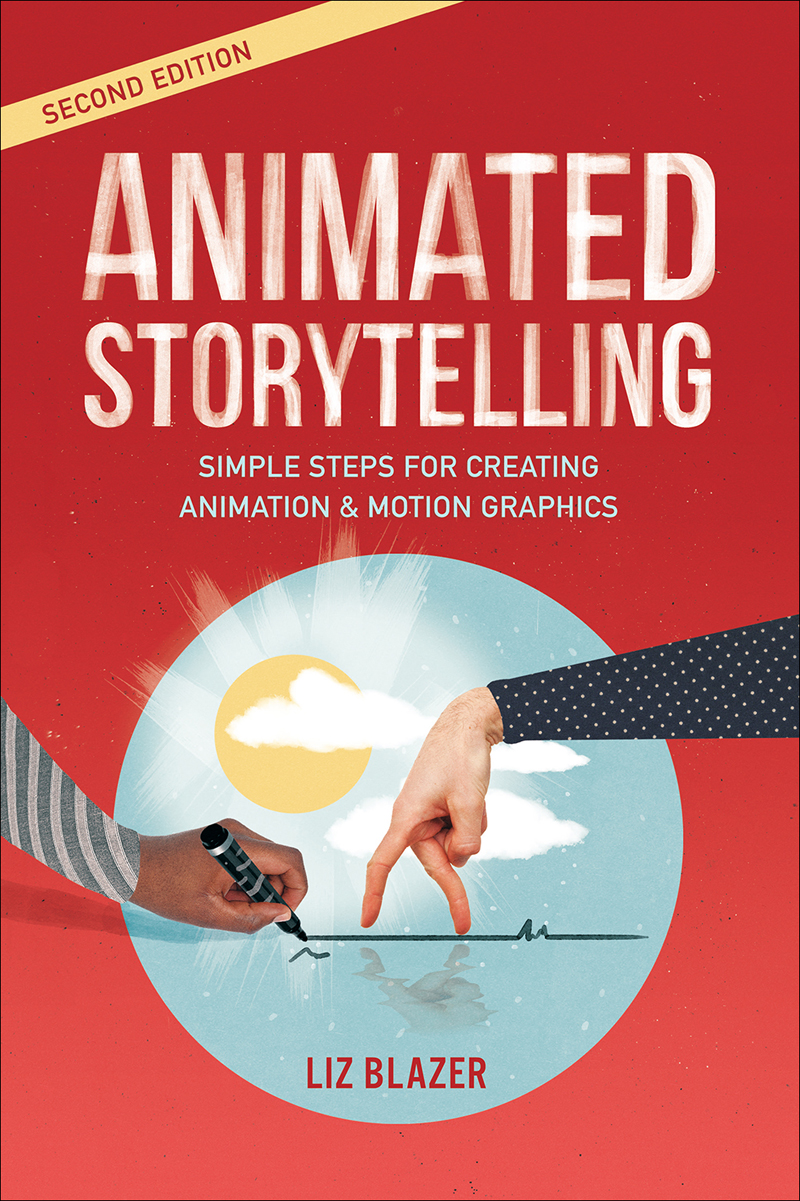Contents
Animated Storytelling
Simple Steps for Creating Animation & Motion Graphics
Second Edition
Liz Blazer

Animated Storytelling, Second Edition
Simple Steps for Creating Animation & Motion Graphics
Liz Blazer
Peachpit Press
Find us on the Web at www.peachpit.com.
Peachpit is a division of Pearson Education.
To report errors, please send a note to .
Copyright 2020 by Elizabeth Blazer
Executive Editor: Laura Norman
Senior Production Editor: Tracey Croom
Development Editor: Jan Seymour
Copy Editor: Jan Seymour
Proofreader: Becky Winter
Compositor: Kim Scott, Bumpy Design
Indexer: Valerie Haynes Perry
Front Cover Design: Ariel Costa
Cover Illustration: Ariel Costa
Back Cover Design: Laura Menza
Interior Design: Laura Menza
Notice of Rights
This publication is protected by copyright, and permission should be obtained from the publisher prior to any prohibited reproduction, storage in a retrieval system, or transmission in any form or by any means, electronic, mechanical, photocopying, recording, or otherwise. For information regarding permissions, request forms and the appropriate contacts within the Pearson Education Global Rights & Permissions department, please visit www.pearsoned.com/permissions/.
Notice of Liability
The information in this book is distributed on an As Is basis without warranty. While every precaution has been taken in the preparation of the book, neither the author nor Peachpit shall have any liability to any person or entity with respect to any loss or damage caused or alleged to be caused directly or indirectly by the instructions contained in this book or by the computer software and hardware products described in it.
Trademarks
Unless otherwise indicated herein, any third party trademarks that may appear in this work are the property of their respective owners and any references to third party trademarks, logos or other trade dress are for demonstrative or descriptive purposes only. Such references are not intended to imply any sponsorship, endorsement, authorization, or promotion of Pearson Education, Inc. products by the owners of such marks, or any relationship between the owner and Pearson Education, Inc., or its affiliates, authors, licensees or distributors.
ScoutAutomatedPrintCode
ISBN 13: 978-0-13-566785-9
ISBN 10: 0-13-566785-2
This book is dedicated to:
My son Evan and my husband Jeff Oliver
Acknowledgments
Ariel Costa, for sharing his spirit, immense talent, and artistry. His illustrations on the cover and throughout this book are the work of a multitalented wizard.
Laura Norman and Nikki McDonald for supporting this book in every way. It has been an honor and privilege to work with you.
Jan Seymour, the editor every writer hopes forsupportive, sharp as a whip, and creative. Jan, you made the editing process free of stress and full of joy.
To the Pearson crew, Tracey Croom, Kim Scott, and Becky Winter, thank you for your care and expertise in making this book sparkle.
I humbly thank and am deeply indebted to Robin Landa, Christine Panushka, Justin Cone, Joey Korenman, Greg Araya, Bill Moore, Colin Elliott, Erin Elliott, Brian Oakes, Peter Patchen, Carla Gannis, Mike Enright, Robert Lyons, Claudia Herbst-Tait, Brooke Keesling, Karin Fong, Kim Dulaney, Yoriko Murakami, USC School of Cinematic Arts, Pratt Institute, MODE Summit, TED-Ed, Stephanie Lo, Jeremiah Dickey, Elizabeth Daley, Kathy Smith, Sheila Sofian, Lisa Mann, Mar Elepao, Gretchen Caldwell Rinnert, Leah Shore, Carlos El Asmar, Laura Menza, Denise Anderson, Marc Golden, Bonita Blazer, Jon Blazer, and Sheldon Blazer.
This book could not have been written without the collaboration, editing, and love from my husband, Jeff Oliver.
Art Credits
Ariel Costa, Cody Walzel, Richan Li, Phil Borst, Jamie Caliri, Louis Morton, Christopher Kezelos, Job, Joris & Marieke, Maya Eliam, Max Porter, Ru Kuwahata, Cyriak Harris, Rka Bucsi, Linda Heller, Richard Borge, Kino Jin, Sterling Sheehy, Shuhei Matsuyama, Lauren Indovina, Kim Dulaney, Passion Pictures, Psyop, The Mill, Denyse Mitterhofer, Ian Wright, Jordan Bruner, Gregory Herman, John Morena, Hsinping Pan, Ed Fernandez, Tara Mercedes Wood, Richard E. Cytowic, TED-Ed, Jake Zhang, Jorge R. Gutirrez, Amanda Bonaiuto, Karin Fong, Sony PlayStation, Imaginary Forces, Felix Sockwell, Miguel Jiron, Maciek Janicki, Marsha Kinder, Mark Jonathan Harris, Scott Mahoy, State Design, Sirirat Yoom Thawilvejakul, Max Friedman, and Julia Pott, HerminUtomo/Getty Images pages 38 and 149, Natalia Darmoroz/Getty Images page 83, CSA-Printstock/Getty Images page 128, RichLegg/Getty Images page 199.
Introduction
We live in a magical era for animated storytelling. Film festivals flourish worldwide to celebrate new animation; animated content is being produced and streamed on new platforms for both kids and adults, and advertisers are hungrily seeking fresh talent to connect with audiences in a meaningful way. Skilled storytellers specializing in animation are in high demand, and the opportunities to thrive in the field are ever-expanding. And yet it has been difficult to find a resource aimed at providing the skills necessary to become a successful animated storyteller.
This book is a step-by-step guide on how to make great stories for both animation and motion graphics. Its based on the idea that whether you are creating a character-based narrative or experimental film for festivals, an advertisement for television or the Web, or a motion graphics title sequence, being intentional about storytelling is the key to success.
In ten simple steps beginning with pre-production and storyboarding through color and sound and finally to animation, this book will provide you with the tools you need to create an effective animated story. Youll find concise explanations, useful examples, and short assignments allowing you to set the theory youve learned into action. Youll also find hints on how to take full advantage of animations limitless potential.
Big consideration went into the idea of exploring animation alongside motion graphics in the same book. The two forms are often treated as if they come from different worlds. Certainly, they grew up in different neighborhoods. Animation (for the most part) has been lumped into the filmmaking discipline, with its commitment to experimental and character-driven stories destined for television, movie theaters, and video game consoles. The study of motion graphics, meanwhile, has been part of the graphic design discipline, where its focus on branding and content promotion has made it essential to advertisements, broadcast graphics, and film titles, to name a few. Animation and motion graphics have been kept apart, and yet these two forms have much in common and so very much to learn from one another. They are presented together in this book because they exist hand-in-hand and because their lessons are mutually beneficial.
For you animated filmmakers eager to get your experimental short into the Ottawa International Animation Festival, Annecy, or GLAS, youll find plenty in this book that speaks directly to your goal, but I also urge you to be influenced by the commercial culture of motion graphics which stresses discipline and strict deadlines. It will help you get that short completed and sent off in time. And for you motion graphics artists working on a new commercial spot, I address you directly and often, but pay close attention to the lessons of animations experimentalism and nonlinear story structures. Your motion work will thrive under its influence.


